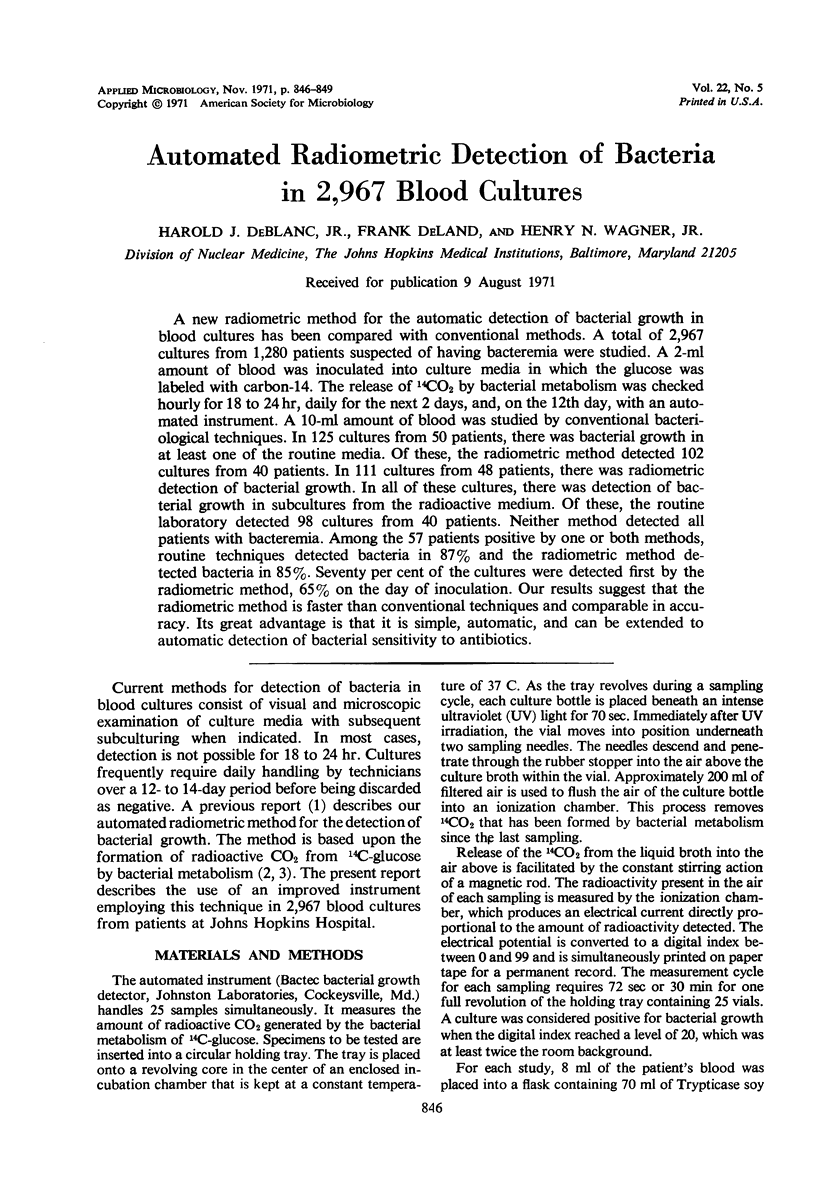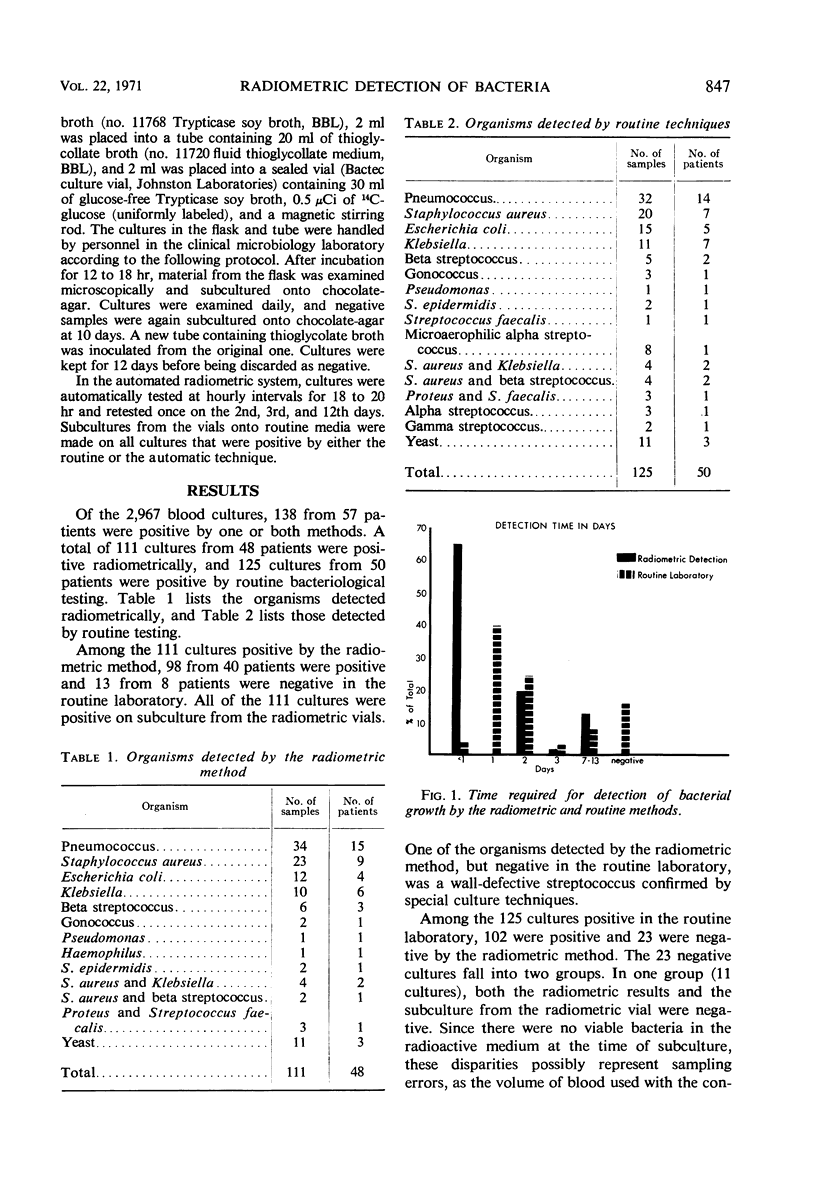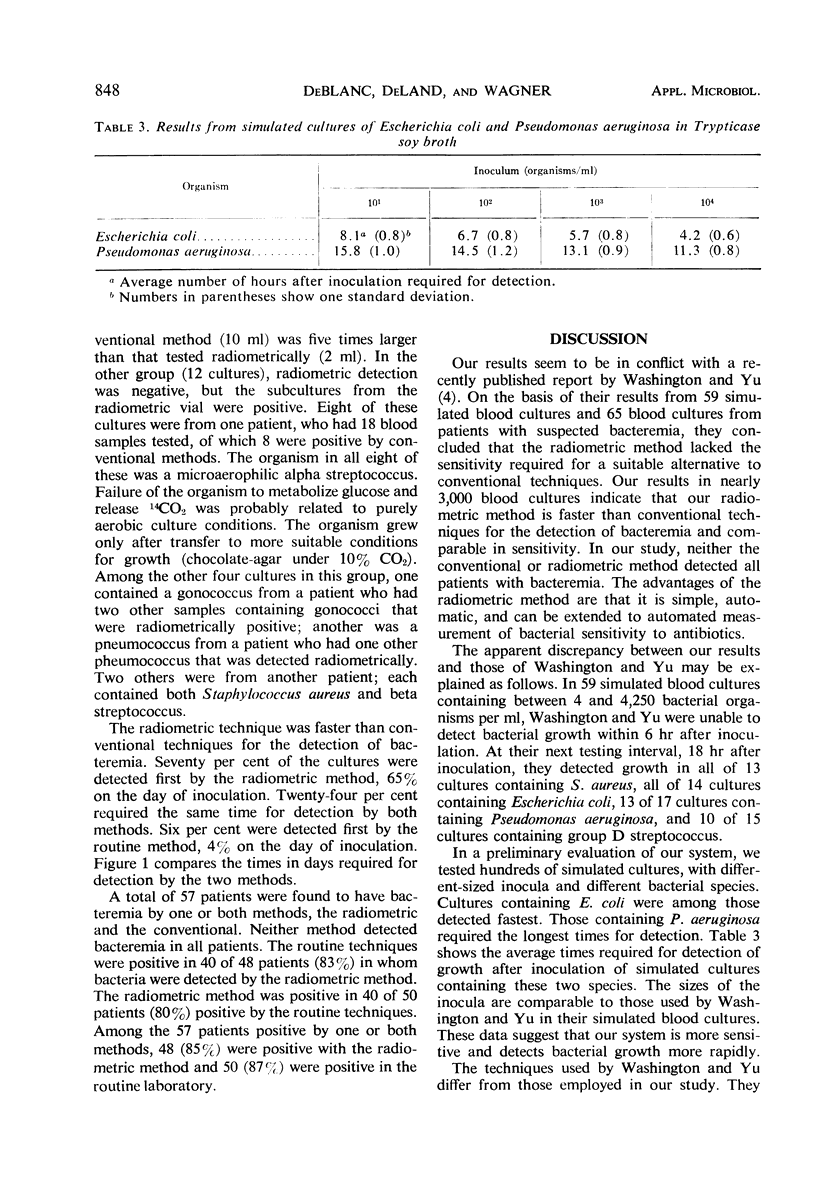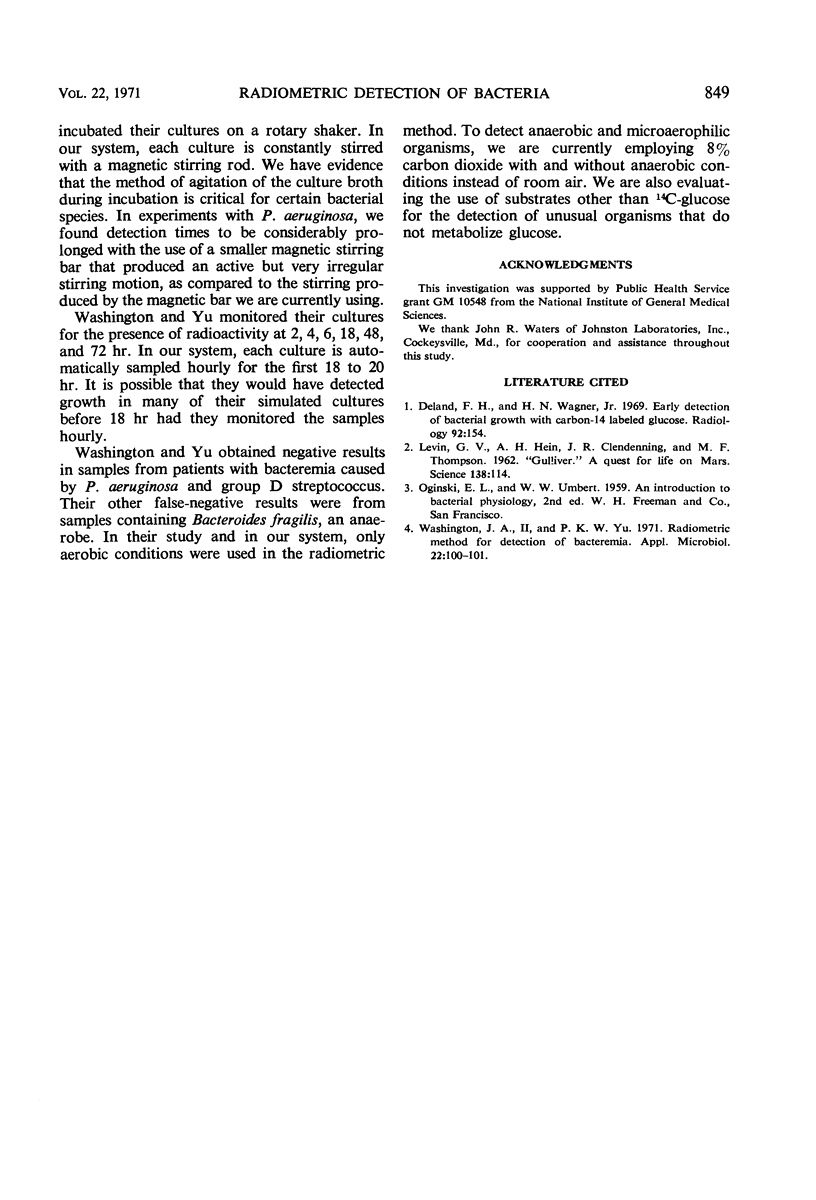Abstract
A new radiometric method for the automatic detection of bacterial growth in blood cultures has been compared with conventional methods. A total of 2,967 cultures from 1,280 patients suspected of having bacteremia were studied. A 2-ml amount of blood was inoculated into culture media in which the glucose was labeled with carbon-14. The release of 14CO2 by bacterial metabolism was checked hourly for 18 to 24 hr, daily for the next 2 days, and, on the 12th day, with an automated instrument. A 10-ml amount of blood was studied by conventional bacteriological techniques. In 125 cultures from 50 patients, there was bacterial growth in at least one of the routine media. Of these, the radiometric method detected 102 cultures from 40 patients. In 111 cultures from 48 patients, there was radiometric detection of bacterial growth. In all of these cultures, there was detection of bacterial growth in subcultures from the radioactive medium. Of these, the routine laboratory detected 98 cultures from 40 patients. Neither method detected all patients with bacteremia. Among the 57 patients positive by one or both methods, routine techniques detected bacteria in 87% and the radiometric method detected bacteria in 85%. Seventy per cent of the cultures were detected first by the radiometric method, 65% on the day of inoculation. Our results suggest that the radiometric method is faster than conventional techniques and comparable in accuracy. Its great advantage is that it is simple, automatic, and can be extended to automatic detection of bacterial sensitivity to antibiotics.
Full text
PDF



Selected References
These references are in PubMed. This may not be the complete list of references from this article.
- DeLand F. H., Wagner H. N., Jr Early detection of bacterial growth, with carbon-14-labeled glucose. Radiology. 1969 Jan;92(1):154–155. doi: 10.1148/92.1.154. [DOI] [PubMed] [Google Scholar]
- Levin G. V., Heim A. H., Clendenning J. R., Thompson M. F. "Gulliver"--A Quest for Life on Mars: Radioisotopes are used in a miniature instrument designed to detect life during early probes of the planet. Science. 1962 Oct 12;138(3537):114–121. doi: 10.1126/science.138.3537.114. [DOI] [PubMed] [Google Scholar]
- Washington J. A., 2nd, Yu P. K. Radiometric method for detection of bacteremia. Appl Microbiol. 1971 Jul;22(1):100–101. doi: 10.1128/am.22.1.100-101.1971. [DOI] [PMC free article] [PubMed] [Google Scholar]


